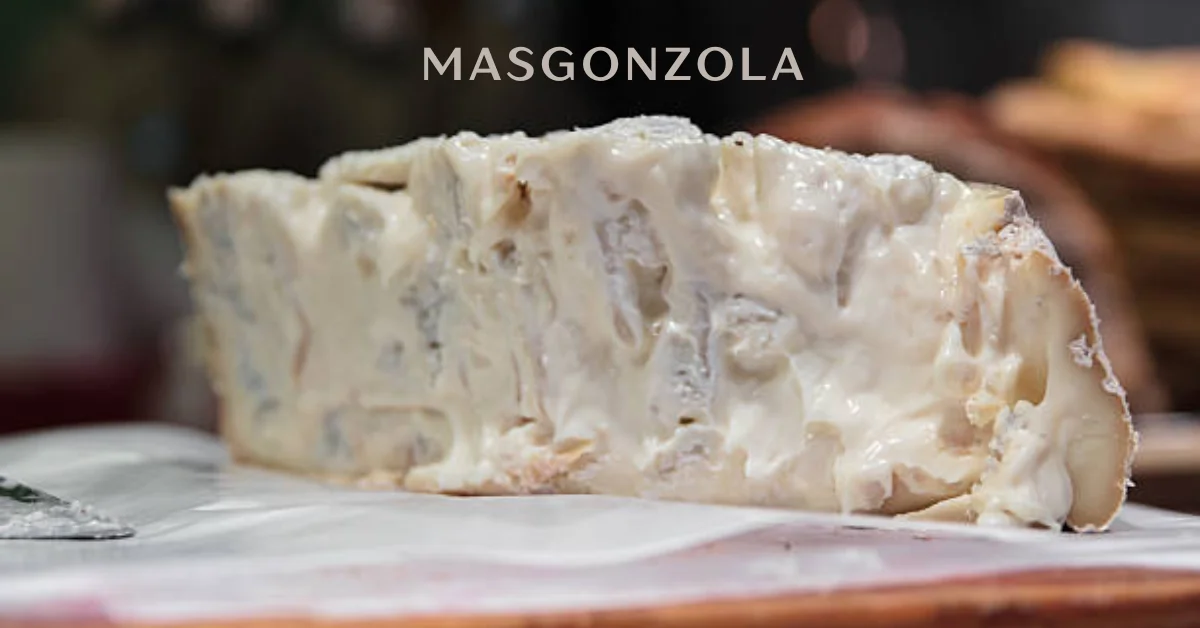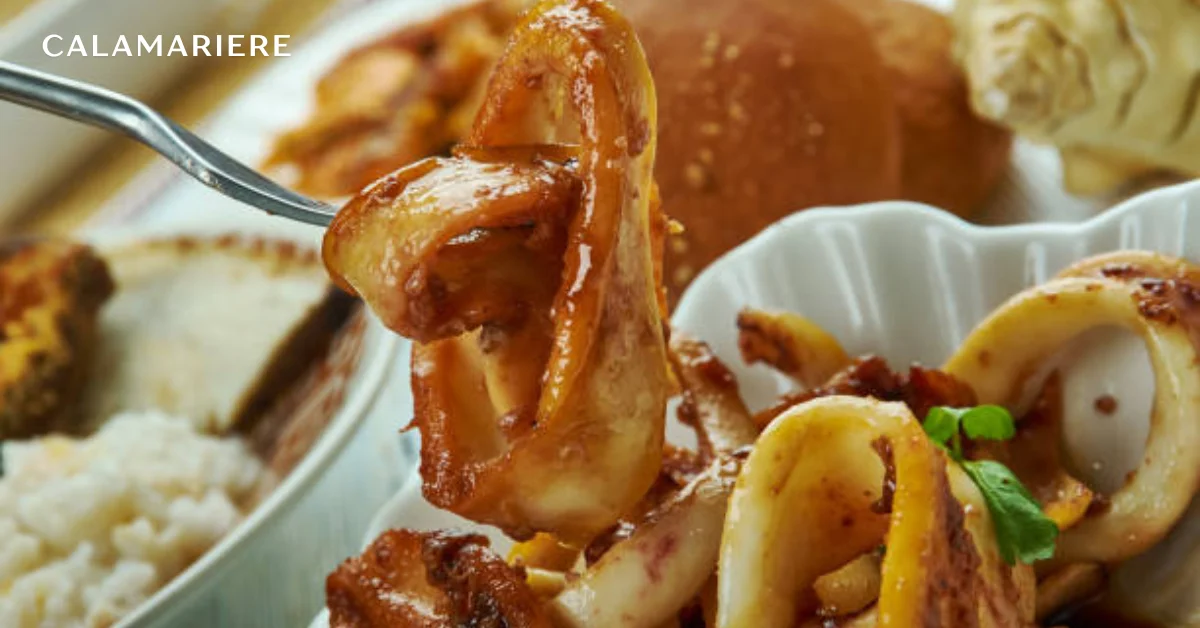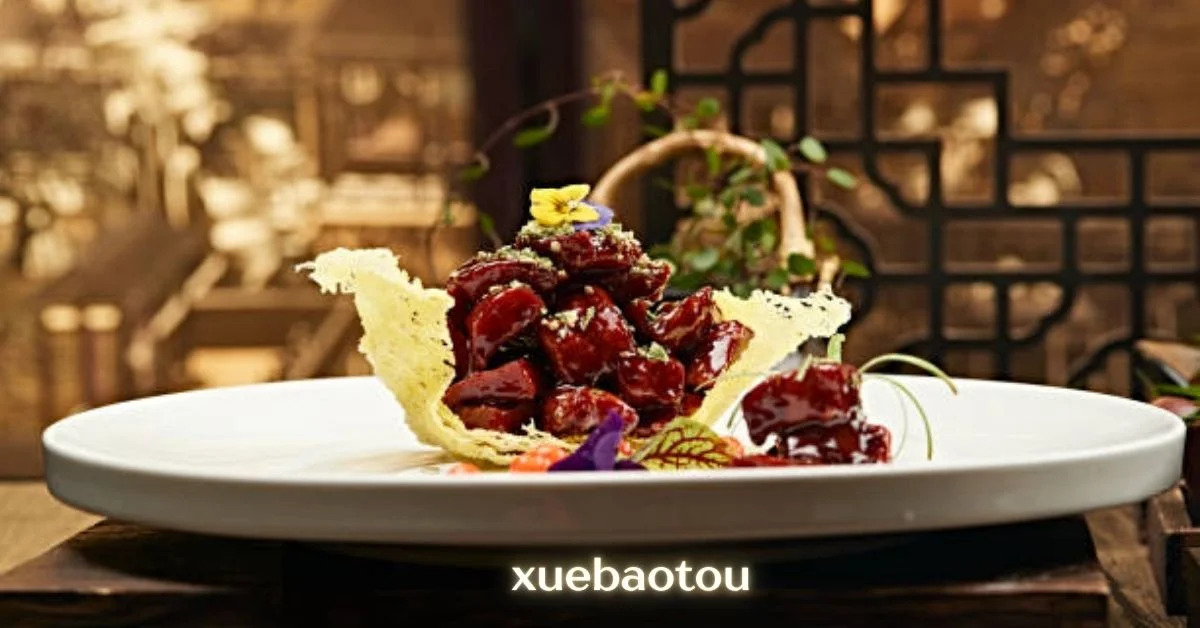Food & Drinks
Lollitip: Exploring the Global, Cultural, and Culinary Revolution on a Stick

Introduction to Lollitip and its origins
Imagine walking down a bustling street, the sun shining brightly overhead. You spot a vibrant stall adorned with colorful treats on sticks. Among them stands the lollipop—a timeless favorite that evokes nostalgia and joy in every bite. But have you ever wondered how this delightful confection has traveled through time and cultures? Enter Lollitip: a playful celebration of all things lollipop, showcasing its journey from humble beginnings to gourmet masterpieces.
The world of lollipops is not just about sugar; it’s an exploration of flavors, traditions, and creativity. From exotic ingredients to artistic presentations, lollipops reflect cultural identities across the globe. As we embark on this sugary adventure, we’ll uncover how Lollitip embodies a global revolution—bringing together diverse tastes while captivating our hearts (and taste buds) along the way. Let’s dive into this fascinating world where culture meets culinary delight, one stick at a time!
The evolution of lollipops around the world
Lollipops have a fascinating history that stretches back thousands of years. Early versions can be traced to ancient Egypt, where honey was mixed with nuts and fruits, molded into shapes, and enjoyed on sticks.
As time progressed, the Chinese created candy from boiled sugar around 500 AD. This innovation spread along trade routes, influencing cultures far and wide.
By the Middle Ages in Europe, sweetened confections became popular among nobility. The concept of a stick emerged as candy makers began crafting their sweets for easier handling.
In America during the early 20th century, lollipops gained massive popularity thanks to mass production techniques. Brands like Tootsie Roll Industries introduced flavors and packaging that delighted children everywhere.
Today’s variety reflects global influences, merging traditional recipes with modern culinary artistry—each lollipop telling its own story through flavors and designs unique to different regions.
Cultural significance and traditions associated with lollipops
Lollipops have woven themselves into the fabric of various cultures, often symbolizing joy and celebration. In many regions, these sweet treats are a staple at festivals and fairs, bringing smiles to both children and adults alike.
In Japan, for example, traditional “wagashi” confections sometimes take the shape of lollipops during seasonal celebrations. These colorful sweets reflect nature’s beauty and are meant to be savored slowly.
In Mexico, “paletas” offer a twist on the classic lollipop. Made with fresh fruits or creamy flavors, they’re enjoyed year-round but hold special significance during Día de los Muertos when families honor their loved ones with vibrant offerings.
The playful design of lollipops also makes them popular as gifts in various cultures—symbolizing love or friendship—and often exchanged during holidays or special occasions. Each bite carries not just flavor but deep-rooted traditions that transcend borders.
Unique and creative lollipop flavors from different countries
Lollipops have evolved far beyond simple cherry and grape flavors. Around the globe, they showcase a vibrant array of unique tastes that reflect local cultures.
In Japan, you might stumble upon matcha lollipops, blending the earthy flavor of green tea with sweet confectionery. These treats offer a delightful contrast as they melt in your mouth.
Travel to Mexico, and you’ll find tamarind lollipops dusted with chili powder. This combination brings together tangy sweetness and spicy heat for an unforgettable experience.
Meanwhile, in Italy, you can indulge in limoncello-flavored pops that capture the essence of summer sunshine through zesty lemon goodness.
Don’t forget about India’s rose-flavored options or lavender-infused creations from France! Each region offers its own twist on this classic treat while celebrating their cultural identity through innovative flavors.
The rise of gourmet lollipops in the culinary world
The culinary scene has seen a delightful transformation with the emergence of gourmet lollipops. Once confined to basic flavors, these treats have evolved into sophisticated confections that tantalize the taste buds.
Artisans are experimenting with unexpected ingredients. Think lavender-infused honey or spicy chili mingling with sweet fruit. Each pop tells a story of creativity and passion for flavor.
Presentation is also key in this gourmet revolution. Intricate designs and vibrant colors elevate lollipops from simple candies to eye-catching masterpieces.
Cafés and specialty shops around the world now feature these unique creations prominently on their menus. They attract food enthusiasts eager for new tastes and experiences.
Pairing gourmet lollipops with beverages adds another layer of enjoyment, making them perfect companions for craft cocktails or artisanal teas. This fresh approach keeps consumers coming back for more, redefining what a lollipop can truly be.
How Lollitip has contributed to the global, cultural, and culinary revolution on a stick
Lollitip has emerged as a vibrant symbol of creativity in the culinary landscape. By transforming classic lollipops into innovative treats, it bridges cultures and flavors from around the globe.
This revolution on a stick invites chefs to explore unconventional ingredients. Think savory herbs paired with sweet fruits or spicy notes mingling with chocolate. These unexpected combinations challenge traditional notions of candy.
Moreover, Lollitip fosters community through shared experiences at food festivals and markets. People gather around these colorful creations, sparking conversations about flavor profiles that transcend borders.
Social media plays a crucial role too. Eye-catching images of artistic lollipop designs go viral, inspiring budding confectioners everywhere.
The fusion of art and taste makes Lollitip not just a treat but an experience—one that celebrates diversity while satisfying our sweet tooth in delightful new ways.
Conclusion
Lollitip represents more than just a sweet treat on a stick; it embodies the rich tapestry of global culinary evolution. From ancient times to modern gourmet creations, lollipops have transcended their simple origins to become symbols of culture, creativity, and celebration. Each bite offers not only flavor but also a taste of history and tradition from various corners of the world.
The joy of discovering unique flavors fosters connections between cultures. Whether it’s a spicy mango lollipop from Mexico or an exotic lychee treat from Asia, these variations bring people together in delightful ways. The rise of gourmet versions further elevates this confectionery staple into the realm of fine dining while appealing to adventurous palates everywhere.
As Lollitip continues its journey through diverse cultural landscapes, it captivates with innovation and imagination. This trend showcases how something as seemingly simple as candy can be redefined time after time—an enduring testament to human creativity and community spirit in every lick. Embrace your next lollipop experience; you might just find yourself tasting the essence of far-off lands wrapped around that colorful stick!

Food & Drinks
Masgonzola: A Flavor Journey Through Tradition and Taste

Introduction to Masgonzola cheese
Welcome to the delicious world of Masgonzola, a cheese that invites you on an unforgettable flavor journey. With its rich history and unique characteristics, this creamy delight is more than just a culinary treat it’s an experience steeped in tradition and artistry. Whether you’re a seasoned cheese enthusiast or a curious newcomer, Masgonzola offers something for everyone. Get ready to explore its origins, discover how it’s made, and learn how to elevate your dishes with this exquisite ingredient that’s capturing hearts (and taste buds) everywhere!
History and origins of Masgonzola
Masgonzola cheese has deep roots in the rich culinary history of Italy. Its origins can be traced back to the northern regions, particularly Lombardy and Piedmont, where traditional cheesemaking flourished.
Historically, Masgonzola emerged around the 9th century. The artisans of these areas began experimenting with local milk and natural molds. They sought a way to preserve dairy while enhancing its flavor.
The name “Masgonzola” itself likely derives from “Gorgonzola,” a nearby town known for its iconic blue cheese. Over centuries, this cheese evolved into distinct varieties, each showcasing unique characteristics influenced by local practices.
As trade expanded during the Renaissance period, Masgonzola found its way onto tables across Europe. It quickly became cherished among nobility and commoners alike for its robust taste and versatility in dishes.
What makes Masgonzola unique in the world of cheeses?
Masgonzola stands out in the cheese world due to its rich, complex flavor profile. This distinctive taste is a harmonious blend of nuttiness and tang that evolves with age. Unlike many cheeses, it offers a delightful creaminess that melts beautifully on the palate.
Another unique feature is its artisanal production methods. Crafted by skilled cheesemakers using traditional techniques passed down through generations, each wheel reflects local terroir and craftsmanship.
The presence of blue veins adds visual appeal while imparting a piquant bite that intrigues even seasoned cheese lovers. Masgonzola’s blend of bold tang and gentle sweetness inspires creative combinations in both cooking and pairing.
This cheese carries rich cultural roots, serving as more than just food it’s a testament to tradition, with every bite echoing history and a dedication to fine craftsmanship.
How is Masgonzola made?
Masgonzola is crafted through a meticulous process that marries tradition with artistry. The process starts with fresh milk, typically gathered from nearby farms. This quality input serves as the foundation for its rich flavor.
Next, the milk undergoes pasteurization to ensure safety and purity. After cooling, beneficial cultures are introduced to start the fermentation process. The rennet follows shortly after, curdling the mixture into creamy curds.
The curds are carefully sliced into small bits and stirred with care. This step helps release whey while maintaining a delicate texture. After cooking the curds at controlled temperatures, they’re drained and placed in molds.
Salting comes next; it enhances flavor while acting as a preservative. Aging takes center stage Masgonzola spends weeks maturing in specific conditions that develop its unique aroma and taste profile.
This careful orchestration results in a cheese that’s both versatile and distinguished within culinary circles.
Pairing suggestions for Masgonzola
Masgonzola’s flexibility makes it a great addition to a wide range of recipes. Its creamy texture and rich flavor make it an excellent companion for various foods and beverages.
For a classic pairing, consider fresh figs or pears. The natural sweetness of the fruit perfectly complements Masgonzola’s tangy edge.
If you’re in the mood for something savory, try it with charcuterie. Cured meats like prosciutto or salami enhance its bold flavors while adding depth to your palate.
Wine lovers should not overlook a good pairing either. A crisp white wine, such as Sauvignon Blanc, complements Masgonzola’s richness perfectly.
Alternatively, opt for a robust red like Cabernet Sauvignon to contrast with its creaminess.
Don’t forget about nuts! Walnuts or almonds add an unexpected crunch that works wonders alongside this delightful cheese.
Recipes featuring Masgonzola as the star ingredient
Masgonzola shines brilliantly in a variety of dishes. Its creamy texture and distinct flavor elevate any meal it’s part of.
Start with Masgonzola risotto, where the cheese melts into the rice, creating a rich and comforting dish. Add peas for sweetness or mushrooms for an earthy contrast.
Another delightful option is a Masgonzola-stuffed chicken breast. The tangy cheese pairs beautifully with herbs like rosemary or thyme, making each bite succulent and flavorful.
For something simpler, try drizzling melted Masgonzola over roasted vegetables. This adds depth to classic sides such as Brussels sprouts or butternut squash.
Don’t forget about salads! Crumble some Masgonzola on fresh greens with walnuts and figs for a perfect balance of flavors.
Indulge in a gourmet pizza topped with crispy bacon and chunks of Masgonzola. This will undoubtedly delight guests at your upcoming event.
Where to find and purchase Masgonzola
Finding Masgonzola can be an exciting adventure. This exquisite cheese is making its way into specialty shops and gourmet markets across the globe.
Start by checking local artisanal cheese shops. These establishments often carry a curated selection of unique cheeses, including Masgonzola. The staff can also provide helpful recommendations for pairing and recipes.
Online retailers are another great option. Many websites specialize in delivering high-quality cheeses directly to your door. Look for vendors that focus on artisanal products to ensure you get authentic Masgonzola.
Don’t overlook farmers’ markets or food festivals either. Local producers may showcase their own versions of this delightful cheese, allowing you to taste before buying.
Consider joining a cheese subscription service focusing on international varieties. It might just surprise you with a shipment featuring this creamy delight!
The future of Masgonzola and its impact on the culinary world
The future of Masgonzola looks bright as culinary trends continue to embrace artisanal and locally sourced ingredients. Chefs are increasingly drawn to this unique cheese, recognizing its versatility in both traditional dishes and modern cuisine.
Innovation is taking center stage. Creative minds experiment with Masgonzola in unexpected pairings. Its rich flavor profile elevates gourmet pizzas, bold salads, and even desserts. This cheese challenges the status quo, encouraging chefs to push boundaries.
As sustainability becomes a priority for consumers, Masgonzola’s production methods align well with these values. Small-scale dairies focus on quality over quantity, ensuring that each wheel maintains its distinctive taste while supporting local agriculture.
Food enthusiasts are also eager to explore global flavors at home. With more recipes featuring Masgonzola surfacing online, it’s set to become a staple ingredient for adventurous cooks everywhere. As interest continues to grow, so does the potential impact of Masgonzola on culinary innovation worldwide.
Conclusion
Masgonzola, with its rich history and unique flavor profile, stands as a testament to the artistry of cheese-making. This delicious cheese not only celebrates age-old traditions but also showcases the potential for culinary creativity. Whether enjoyed on a charcuterie board or incorporated into gourmet recipes, Masgonzola continues to captivate food lovers around the world.
As chefs explore new ways to utilize this versatile ingredient, its popularity is likely to grow even more. The future looks bright for Masgonzola as it carves out a special place in both home kitchens and upscale dining establishments alike. Embrace the journey of taste that Masgonzola offers; it’s an experience worth savoring.
Food & Drinks
Calamariere: A Flavorful Journey Through Tradition

Calamariere is more than just a dish; it’s an experience that transports you through time and culture with every bite. Picture tender morsels of squid, perfectly seasoned and cooked to perfection, inviting you on a flavorful journey steeped in tradition. This culinary gem hails from Mediterranean roots, but its charm has spread across the globe, evolving into various forms while maintaining its essence.
Join us as we dive deep into the history of calamariere, explore its tantalizing variations, and uncover why this delightful seafood dish deserves a place on your dining table. Whether you’re a seasoned chef or a curious foodie, there’s something for everyone in the world of calamariere!
The History and Origins of Calamariere
Calamariere traces its roots back to the coastal regions of the Mediterranean, where fresh seafood has long been a staple in local diets. Ancient civilizations celebrated squid, often catching it using traditional fishing methods passed down through generations.
As global connections grew, calamariere traveled far, leaving its flavorful mark on countless cuisines. It became popular not only in Italian cuisine but also found its way into Spanish and Greek dishes. Each culture embraced this delicacy, adding unique spices and cooking techniques that reflect their culinary heritage.
The name “calamariere” itself is derived from the Italian word for squid, “calamaro.” Over centuries, this dish evolved from simple preparations to gourmet creations showcased in high-end restaurants worldwide. Today, calamariere embodies a rich tapestry of flavors that continue to delight food lovers everywhere while honoring its storied past.
What is calamariere?
Calamariere is a vibrant seafood creation that pays tribute to the richness of the sea.Calamariere is a delightful dish that celebrates the ocean’s bounty. At its core, it features tender squid, often prepared in various regional styles.
The beauty of calamariere lies in its versatility. You can find it served grilled, fried, or even stuffed with flavorful ingredients. Each method infuses its unique charm into the dish.
Infused with aromatic herbs and bold spices, calamariere delivers an explosion of taste in every bite.
From zesty lemon to rich garlic, these elements enhance the natural taste of seafood.
In many cultures, this dish is more than just food; it’s a symbol of shared meals and family gatherings. Whether enjoyed as an appetizer or main course, calamariere evokes warmth and connection among diners.
Food lovers cherish calamariere for its satisfying texture and delicious profile. It’s no wonder this culinary gem has secured a place on tables around the world.
Famous Calamariere Dishes Across Different Cultures
Calamariere can be found in various forms across cultures, each with its twist. In Italy, you might savor calamari fritti, where squid rings are lightly battered and fried to golden perfection. It’s a popular antipasto that pairs beautifully with a squeeze of lemon.
Traveling to Japan, you’ll encounter grilled ika (squid) skewers seasoned simply with salt or teriyaki sauce. It’s often served at street food stalls and festivals, offering a smoky flavor that enhances the natural sweetness of the seafood.
In Spain, calamari is celebrated in dishes like calamares en su tinta. This dish features squid cooked in its ink for an intense flavor profile paired with rice or crusty bread.
Each region showcases unique cooking methods and spices that elevate this humble ingredient into something extraordinary. The variations highlight how calamariere transcends borders while keeping its essence intact.
The Key Ingredients and Cooking Techniques Used in Calamariere
Calamariere brings together a delightful mix of ingredients that elevate its taste. Central to this dish is tender squid, prized for its subtle taste and pleasing texture. Selecting high-quality seafood makes all the difference.
Seasoning is crucial. Fresh herbs such as parsley, lemon zest, and garlic elevate the squid’s delicate flavor with bright, aromatic notes. Olive oil adds richness while keeping it light.
Cooking techniques vary but often involve grilling or frying to achieve that crispy outer layer. Grilling imparts a smoky depth, while frying yields a satisfying crunch.
Some recipes call for slow-cooking in savory broths to infuse flavors deeply into the squid. This method transforms calamariere into a comforting meal perfect for sharing with family and friends.
Each step in preparing calamariere showcases artistry in blending textures and tastes, inviting you to explore culinary traditions from around the world.
Health Benefits of Eating Calamariere
Beyond its savory appeal, calamariere offers valuable nutrients that support a healthy lifestyle. Rich in protein, this dish provides essential amino acids that support muscle growth and repair.
The seafood element brings along omega-3 fatty acids. These healthy fats are known to boost heart health and reduce inflammation in the body. Eating calamariere can contribute to overall well-being.
Moreover, calamari is low in calories compared to many meat options, making it an excellent choice for those watching their weight. It’s also high in vitamins like B12, which aids energy metabolism and keeps your nervous system functioning properly.
Another advantage is its mineral content. Calamari includes important minerals such as selenium and zinc, supporting immune function and promoting healthy skin. Integrating calamariere into your diet offers both flavor and health benefits!
Exploring Different Variations and Twists on Traditional Calamariere Recipes
Calamariere offers a delightful canvas for culinary creativity. Chefs worldwide experiment with this iconic dish, adding unexpected flavors and textures.
One popular variation is the spicy calamariere, infused with chili flakes and garlic. This adds an exciting kick that elevates the traditional taste.
Another twist involves using local ingredients. In coastal regions, fresh seafood replaces traditional squid, creating unique regional interpretations that celebrate local culture.
Vegetarians can also join in on the fun! Using eggplant or tofu instead of squid offers a flavorful vegetarian spin without compromising satisfaction.
For those who crave fusion cuisine, try combining Italian-style calamariere with Asian-inspired sauces like teriyaki or sweet chili sauce. The fusion of tastes creates a surprising harmony that excites the palate.
Experimenting with presentation can transform your meal too. Serve it in lettuce cups or atop a bed of quinoa for visual appeal alongside flavor innovation.
Tips for Making the Perfect Calamariere Dish at Home
Start with fresh ingredients. Quality matters when it comes to calamariere.
Next, prepare your squid properly. Clean and cut them into even pieces for uniform cooking. This ensures they all cook at the same rate.
Don’t skip marinating. A simple mix of olive oil, garlic, and herbs can elevate flavors significantly. Allow it to sit for at least 30 minutes before cooking.
Temperature is key in cooking calamariere. High heat will give you a delightful sear while keeping the texture tender inside.
Experiment with coatings too! Whether you prefer a light breadcrumb crust or no coating at all, make sure it’s seasoned well for that extra kick of flavor.
Serve immediately after cooking to retain that perfect crunch and tenderness combination. Enjoy your homemade creation alongside a zesty dipping sauce or fresh salad for an authentic experience.
Conclusion: Why Calamariere is a Must-Try Dish for Any?
Calamariere is more than just a dish; it’s an experience steeped in tradition and flavor. This delightful preparation of squid showcases the culinary creativity found across various cultures. From Italian to Spanish influences, calamariere has earned its place as a beloved favorite.
The key ingredients including fresh seafood, herbs, and spices combine to create tantalizing flavors that dance on your palate. The cooking techniques used often bring out the best in these ingredients, whether through frying, grilling, or slow cooking.
Embracing calamariere also brings health benefits. It’s packed with protein and essential nutrients while remaining low in calories when prepared thoughtfully. Plus, there are countless variations you can explore. Whether you prefer it spicy or adorned with rich sauces, options abound for every taste preference.
If you’re eager to try making this exquisite dish at home, some simple tips will help elevate your version of calamariere into something truly special.
With all these elements combined the history, varied dishes from around the world, key ingredients and their health benefits it’s clear why calamariere deserves a spot on your plate. Don’t miss out on this flavorful journey; give it a try!
Food & Drinks
Xuebaotou Secrets: Taste the Region’s Best-Kept Culinary Joys

Introduction to Xuebaotou and its cuisine
Nestled in the heart of Inner Mongolia, Xuebaotou is a treasure trove for food enthusiasts. A melting pot of flavors, this bustling city offers cuisine inspired by its rich past and multicultural roots. From traditional dishes that have stood the test of time to modern twists on classic recipes, Xuebaotou’s cuisine offers something for every palate.
As you wander through bustling markets and cozy eateries, you’ll discover flavors crafted from unique local ingredients. Each bite tells a story steeped in history, culture, and tradition. Whether you’re a seasoned foodie or just curious about new tastes, Xuebaotou invites you on an unforgettable culinary adventure. Get ready to uncover the best-kept secrets of this remarkable region!
The History Behind Xuebaotou’s Culinary Delights
Xuebaotou’s culinary history is as rich and diverse as its landscape. Located in Inner Mongolia, the area’s identity has evolved through generations of cultural blending. The area’s nomadic heritage plays a crucial role in its food traditions.
Historically, the Mongolian plateau provided abundant resources for local communities. Livestock such as sheep and cattle became staples of Xuebaotou cuisine. These ingredients laid the foundation for numerous traditional dishes that still delight locals today.
During the Qing Dynasty, trade routes opened up new possibilities for flavors and techniques. Ingredients from neighboring provinces blended with indigenous recipes, creating a unique fusion that defines Xuebaotou’s culinary identity.
Festivals also played a significant part in shaping local gastronomy. Celebrations often featured elaborate feasts showcasing regional specialties, bringing together families and fostering community spirit through shared meals. Each dish tells a story rooted in tradition and culture, making every bite an exploration of history itself.
Must-Try Dishes in Xuebaotou
When in Xuebaotou, your taste buds are in for a treat. One dish that stands out is the local lamb hotpot. Tender slices of lamb simmered with fresh vegetables create a comforting experience.
Don’t miss out on the signature fried rice topped with pickled vegetables. This dish showcases the region’s unique flavors and textures, making each bite memorable.
Another must-try is the hearty noodle soup flavored with secret spices. The rich broth warms you up while delivering an explosion of taste.
For dessert, indulge in sweet bean paste buns. These fluffy treats offer a delightful end to any meal and reflect traditional cooking methods passed down through generations.
Each plate tells a story of Xuebaotou’s culinary heritage, inviting you to savor every moment spent enjoying them.
Hidden Gems: Off-the-Beaten-Path Restaurants in Xuebaotou
When wandering the streets of Xuebaotou, a treasure trove of hidden culinary gems awaits. These off-the-beaten-path restaurants often escape the notice of tourists but offer authentic flavors that define local cuisine.
One such spot is a family-run eatery tucked away in an alley. The aromas wafting from its kitchen hint at dishes steeped in tradition. Here, you can savor homemade dumplings bursting with flavor, crafted using recipes passed down through generations.
Another must-visit is a small noodle shop renowned among locals for its spicy broth and handmade noodles. Diners gather around communal tables, sharing stories over steaming bowls—a true reflection of the city’s warm hospitality.
Exploring these lesser-known establishments not only treats your taste buds but also immerses you in the heart of Xuebaotou’s vibrant food culture. Discovering them feels like uncovering secrets waiting to be savored by those willing to venture beyond tourist traps.
Unique Ingredients and Cooking Techniques of Xuebaotou Cuisine
Xuebaotou’s cuisine is a vibrant tapestry of flavors, enriched by its unique ingredients. One standout feature is the use of fresh mountain herbs. These local plants infuse dishes with an aromatic punch that tantalizes the palate.
Another distinctive element is the region’s homemade sauces. Crafted from traditional recipes passed down through generations, these sauces add depth and complexity to various meals.
Cooking techniques also play a crucial role in this culinary landscape. Steaming and slow-cooking are prevalent methods, preserving the natural flavors while ensuring tender textures.
Moreover, Xuebaotou chefs often incorporate pickling techniques for vegetables, enhancing their taste and adding delightful crunchiness to each bite.
The art of presentation cannot be overlooked either; meals are carefully plated to showcase both color and texture, turning each dish into a visual feast as well as a flavorful one.
Food as a Cultural Pillar in the Traditions of Xuebaotou
Food in Xuebaotou is more than just sustenance; it’s a vital thread woven into the fabric of daily life. Meals are often communal, bringing families and friends together to share stories and laughter.
Festivals highlight this cultural bond. Special dishes are prepared to honor traditions and celebrate local history. Each recipe carries tales passed down through generations, infusing them with meaning.
During weddings or holidays, food plays a central role, symbolizing prosperity and unity. Signature ingredients reflect the region’s geography, adding depth to every bite.
Street vendors line bustling markets, offering an array of flavors that embody Xuebaotou’s spirit. Here, locals gather not only for delicious meals but also for connection and community.
The preparation of food itself is seen as an art form. Culinary skills are cherished and celebrated within families, ensuring that recipes remain alive on plates across time.
Tips for Experiencing the Best of Xuebaotou
To truly savor the essence of Xuebaotou, embrace local recommendations. Chat with residents; they often share hidden gems that guidebooks overlook.
Timing your visit can enhance your experience. Mornings buzz with street food vendors offering fresh delights. Lunchtimes reveal bustling eateries filled with locals enjoying authentic flavors.
Don’t shy away from trying dishes you can’t pronounce. Adventurous eating leads to unexpected pleasures and memorable moments.
Consider joining a cooking class or food tour for an interactive approach to understanding the cuisine. Hands-on experiences create lasting connections to the flavors.
Take time to explore markets brimming with unique ingredients. Engaging your senses here allows you to appreciate how local produce shapes traditional dishes in this vibrant region.
Conclusion
Xuebaotou is a treasure trove of culinary delights waiting to be explored. From its rich history to the vibrant flavors that define its cuisine, every bite tells a story. The must-try dishes offer an authentic taste that reflects the region’s culture and traditions.
The hidden gems scattered throughout Xuebaotou beckon adventurous foodies to venture off the beaten path. Here, unique ingredients shine, showcasing innovative cooking techniques passed down through generations.
Food is more than just sustenance in Xuebaotou; it plays a vital role in bringing people together and celebrating local customs. As you navigate this gastronomic landscape, keep these tips handy for an unforgettable experience.
Embrace the flavors of Xuebaotou and discover why it’s considered one of China’s best-kept culinary secrets. With each meal, you’ll gain insight into not only what makes this region special but also its heart and soul. Happy eating!
-

 Business5 months ago
Business5 months agoSEO Experts at Garage2Global: Boosting Business Rankings Fast
-

 Food & Drinks5 months ago
Food & Drinks5 months agoCalamariere: A Flavorful Journey Through Tradition
-

 Entertainment6 months ago
Entertainment6 months agoPlayers Infoguide Dmgconselistas: Dominate Every Match with Real-Time Metrics and Pro-Level Game Analysis
-

 Fashion5 months ago
Fashion5 months agoViscose Explained: Fabric Making, Applications & Sustainability
-

 General6 months ago
General6 months agoSerialpressit com: The Simple, Smart Blogging Hub That’s Winning Readers and Writers in 2025
-

 Entertainment6 months ago
Entertainment6 months agoGoonierne 2: A Surreal Web Game Blurring Fact, Fiction, and Digital Folklore
-

 General6 months ago
General6 months agoWhy SBXHRL Is the Backbone of Modern Blogging
-

 Education6 months ago
Education6 months agoDuaction: How Action-Driven Education Transforms Students, Professionals, and Organizations


